Soviet Minsk, 1968: 45 color photos
- Michael Laxer
- Nov 15, 2022
- 3 min read

Published in 1968, this tourist photo book had 44 attached full color photos as well as a panoramic one that was its inside cover.
Minsk was the capital of the Byelorussian SSR and had been rebuilt from the utter devastation of World War II and Nazi occupation that saw 80% of the city destroyed and its population drop from around 300,000 to 50,000.
After the war the city had not only risen from the literally ashes again but by 1968 had become a thriving metropolis of between 750,000 and 1 million people. One of the great accomplishments of Soviet socialism, as we have pointed out before on The Left Chapter, was the post-war reconstruction.
Here are photos of cityscapes, parks, important buildings, places like the "Partisan" cinema-house and even the House Museum of the First Congress of the RSDLP. The 1st Congress of the Russian Social Democratic Labour Party, which became the Bolsheviks and eventually the CPSU, was held in Minsk in 1898.
We have included all the descriptions as well as the brief accompanying text.
Text:
Who within the Soviet Union and beyond its borders does not know the name of the Byelorussian capital, the city whose history goes back far into the centuries and whose lot has been a complicated and troubled one?
Many are the roads that lead to Minsk.
From all four directions at all hours of the day trains arrive at the railway station, white-winged liners land at the airport, buses run along the highways, over field and forest roads.
No matter what road you may take to come to Minsk, it will lead you into a city that is new and young and wonderful, a city of large plants and factories, of brightly coloured buildings, broad avenues and sunny squares, full of air and light, of green grass and flowers, a city of cosy little parks and big ones too, the city that is the heart of Byelorussia.
Lenin Avenue takes its course like a swift and noisy river from Lenin Square. Here in front of the magnificent Government House stands Ilyich in bronze, a sudden astounding thought preventing his swift movement forward.
The Avenue runs through Minsk from southwest to northeast. On each side there are well-proportioned buildings pleasing to the eye with their interesting architecture. Quietly rustles the thick foliage of the young trees lining both sides of the avenue, with flowers blossoming all along the streets. Under the trees Lenin Avenue runs up to and beyond the Central Square over the open-worked, delicate bridge across the Svisloch with its granite embankment and leads into the Victory Square. Here at the obelisk, a monument erected to the soldiers and partisans who died for their motherland, a flame was lit to burn eternally in their glory.
From the Victory Square Lenin Avenue rushes onward to converge on the outskirts of Minsk with the Moscow Highway.
The Avenue forks either into boulevards or into streets.
Whichever direction you may take, everywhere you will see evidence of the new, the beautiful, the optimistic: public institutions, blocks of new apartments, buildings or plants and factories, large squares and shady parks with their green canopies. On the outskirts as well as in the centre of the city your eye will meet the same picture.
In the sky, high overhead, the fluffy clouds are floating as time itself is unceasingly, inevitably floating over the town with the passing of the years and centuries.
Minsk is 900 years old.

Lenin Square
Hotel Belarus
Lenin Ave.

4. Railway Station Square
5. Lenin Ave.
6. Magilev Highway
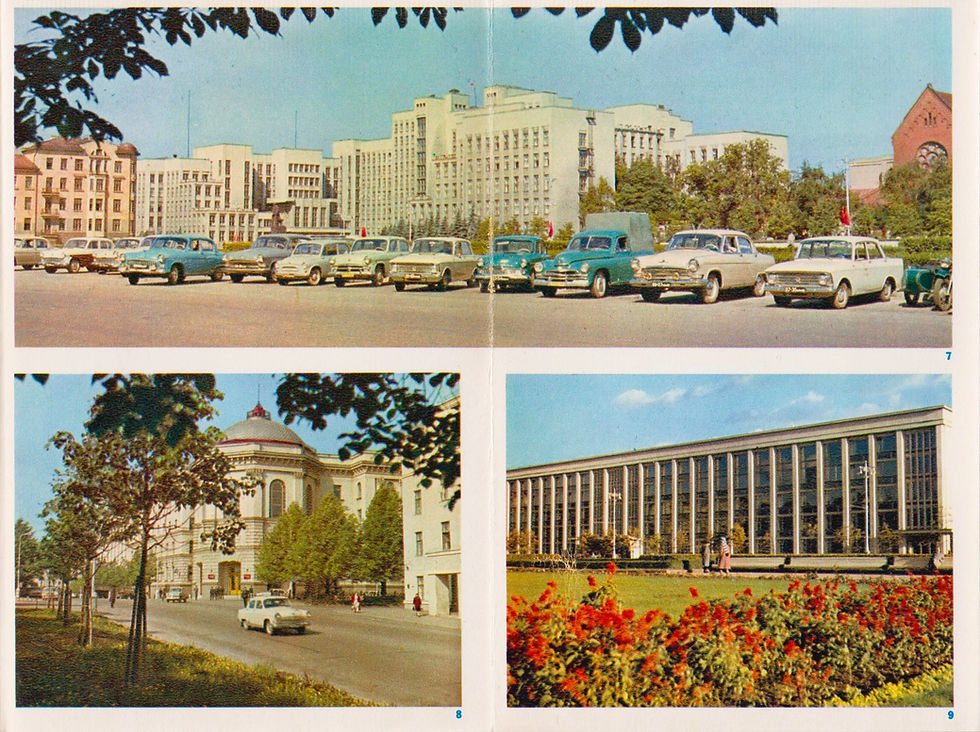
7. Government House
8. Kirov Street
9. Town Executive Committee House
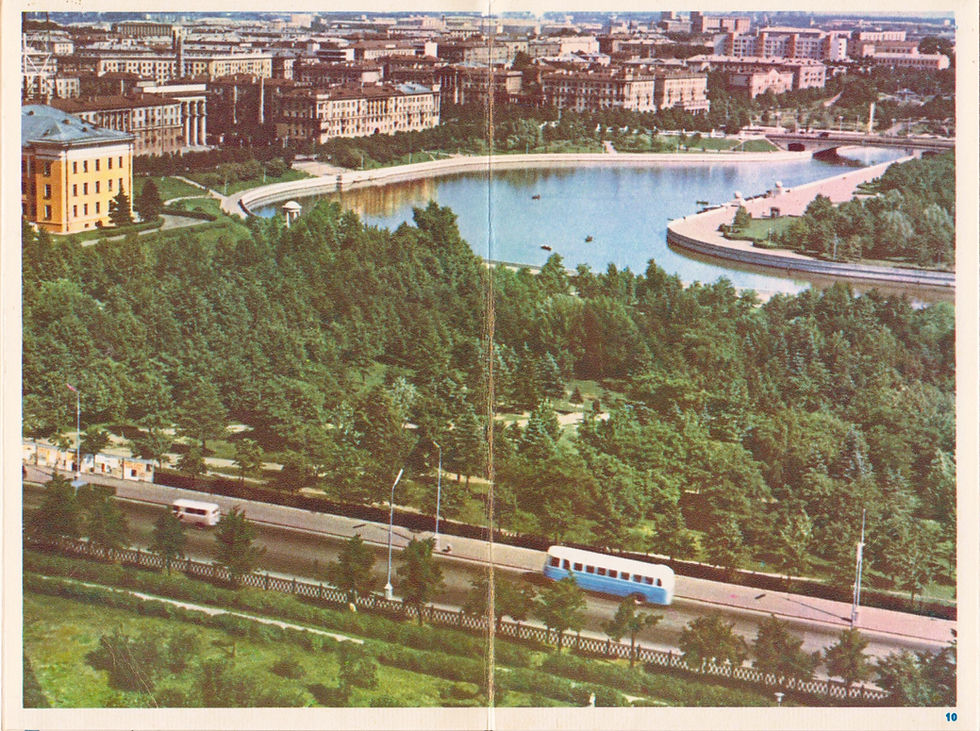
10. View of the city from the Opera House side
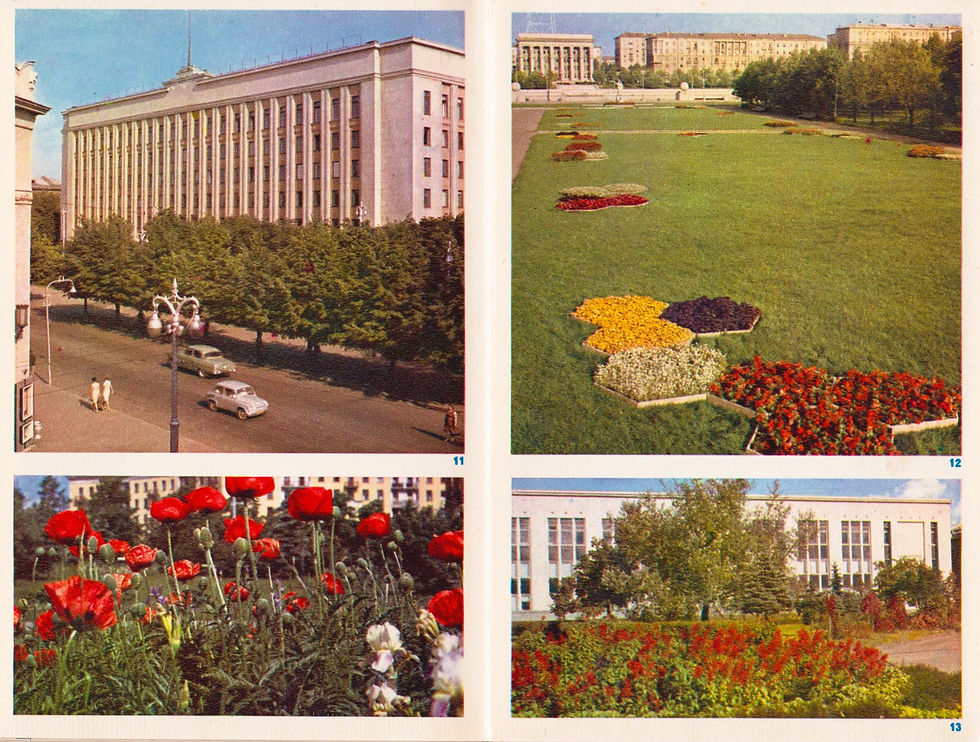
11 The house of the Central Committee of the Communist Party of Byelorussia
12. Yanka Kupala Park
13. State Museum of Great Patriotic War History

14. The House Museum of the First Congress of the RSDLP
15. Yakoub Kolas Museum
16. Yanka Kupala Museum

17. Central Public Garden
18. View of the city from the Children Gorky Park side
19. View of the Opera House from the Yanka Kupala park side
20. The Svisloch River quay

21. State Fine Arts Museum of the BSSR
22. Lenin Avenue
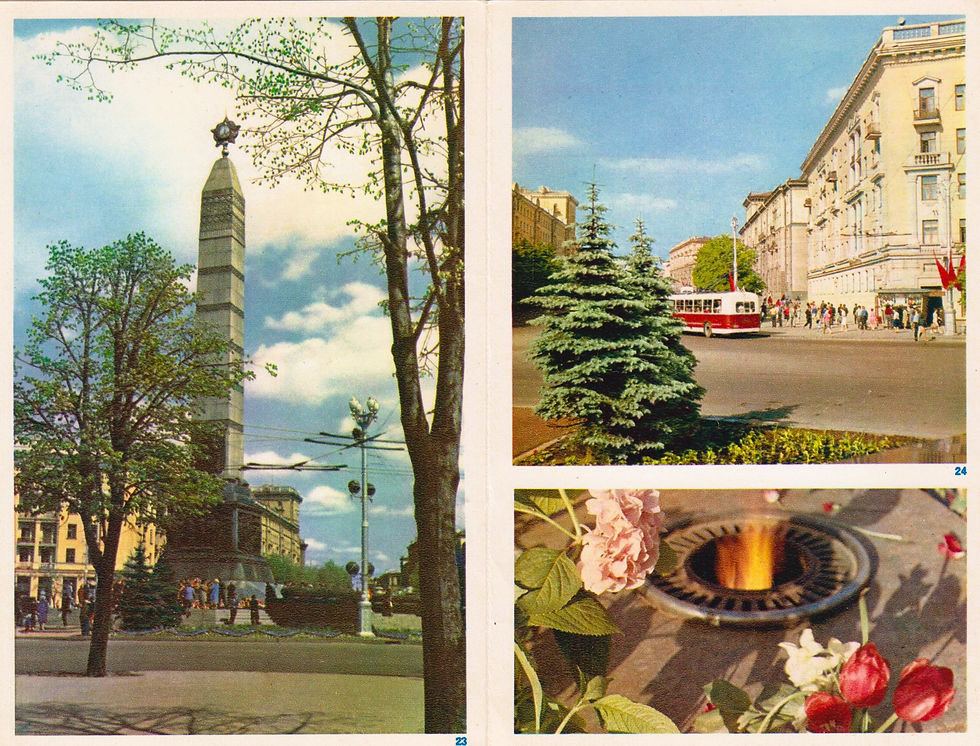
23. Obelisk memorial to the Soviet Red Army soldiers and partisans fallen in the fight for the liberation of Byelorussia in the years of the Great Patriotic War
24. Victory Square

25. Common tomb of the victims of fascism
26. Obelisk memorial on the Magilev Highway
27. War memorial in Masukovshchina
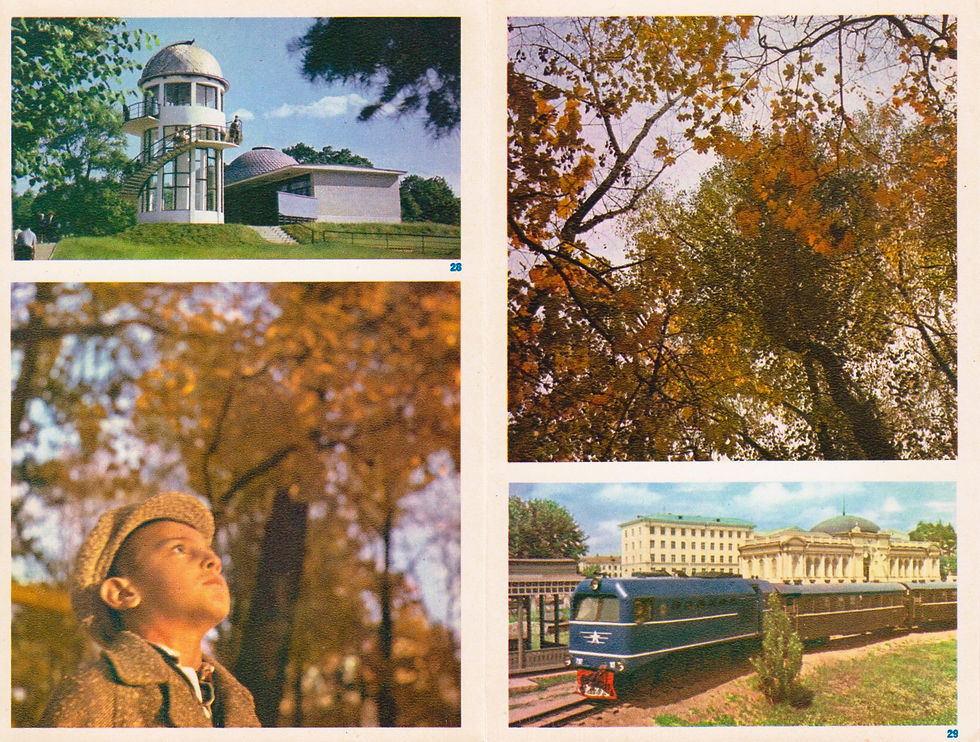
28. Planetarium, Gorky Park
29. Children's Railway
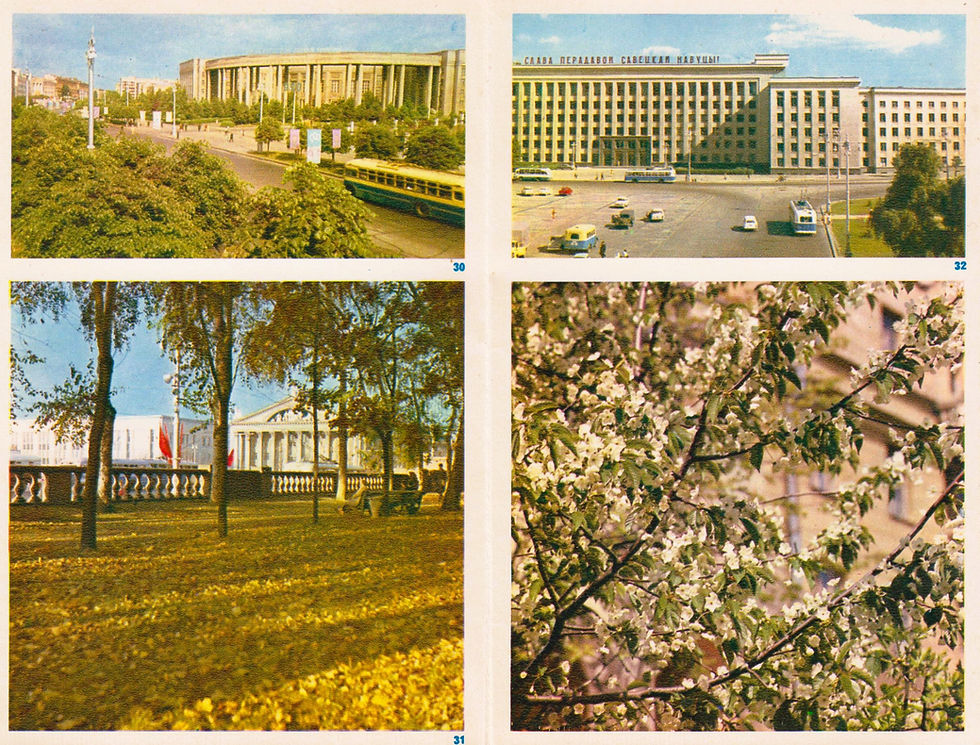
30. Academy of Sciences of the BSSR
31. Central Square
32. Byelorussian State Lenin University

33. Dwelling houses in Respublikanskaya Street
34. Boulevard in Talbuhkin Street
35. Dwelling houses in Vaneev Street
36. Old town district, Namiga Street

37. Lenin Ave.
38. Central General Stores
39. Palace of Sports
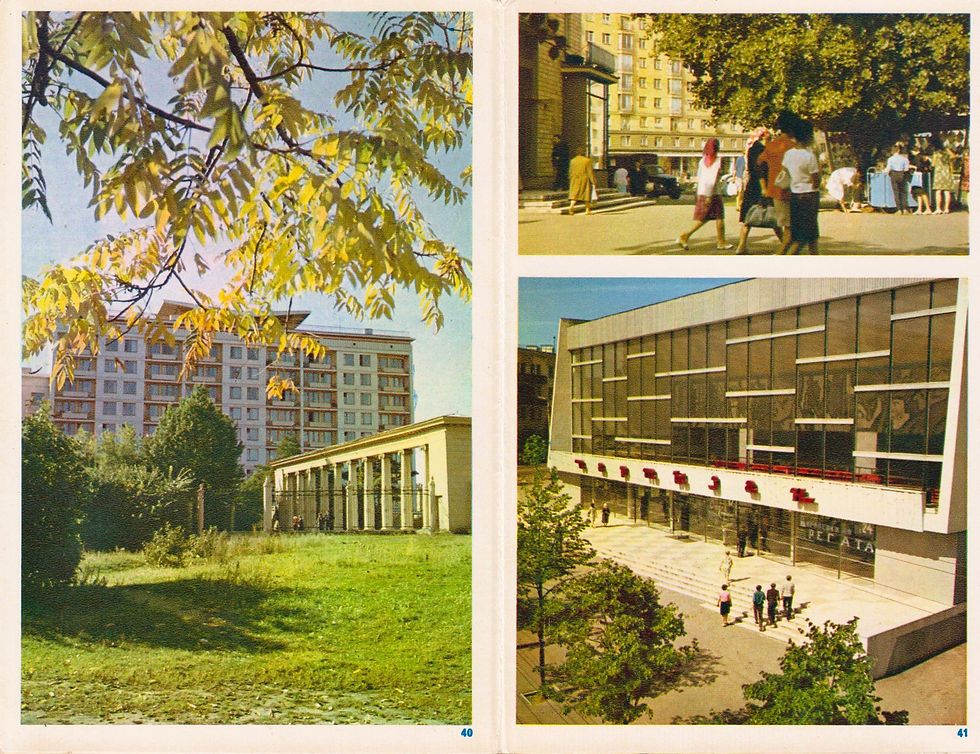
40. Botanical Gardens Entrance
41. Partisan Cinema-house
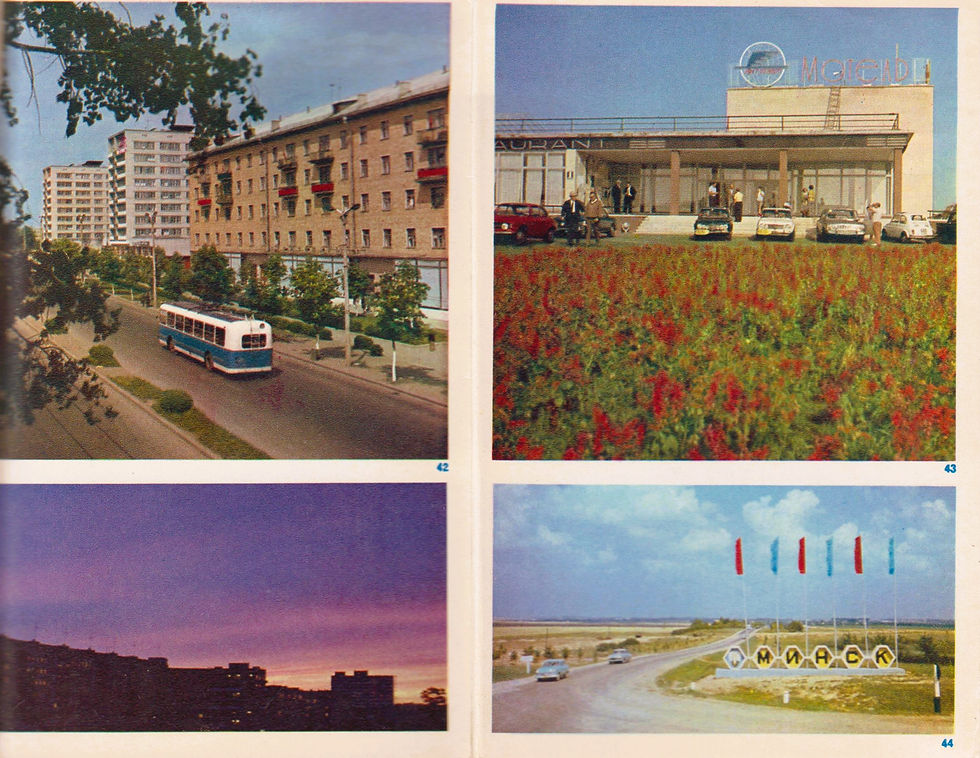
42. Magilev Highway
43. Motel
44. View of city gates from Slutsk Highway







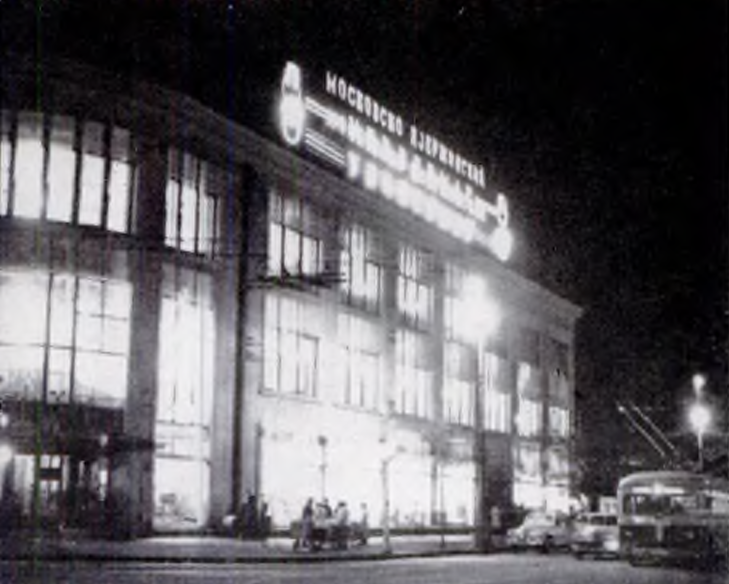


Comments